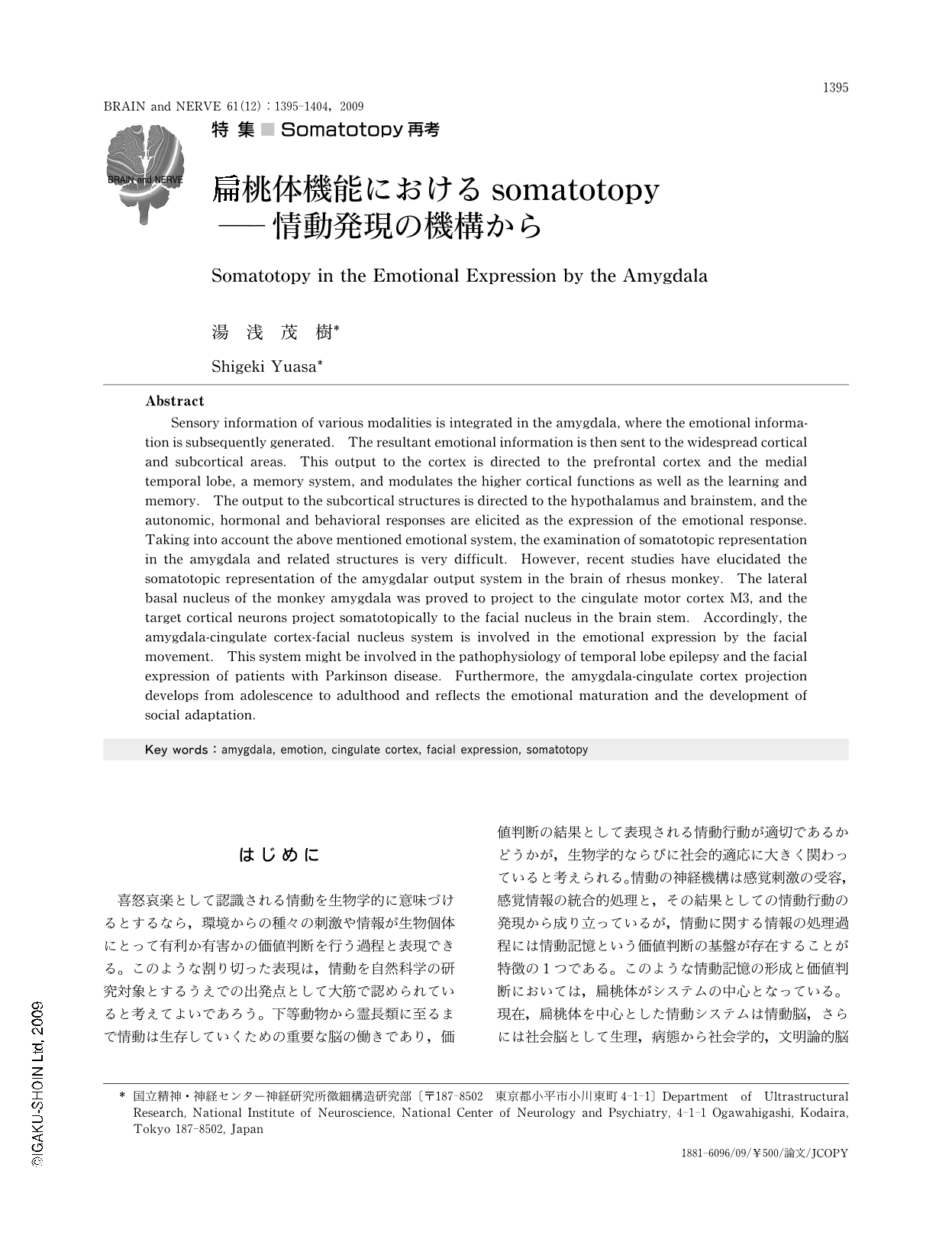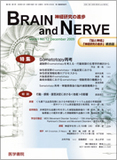Japanese
English
- 有料閲覧
- Abstract 文献概要
- 1ページ目 Look Inside
- 参考文献 Reference
はじめに
喜怒哀楽として認識される情動を生物学的に意味づけるとするなら,環境からの種々の刺激や情報が生物個体にとって有利か有害かの価値判断を行う過程と表現できる。このような割り切った表現は,情動を自然科学の研究対象とするうえでの出発点として大筋で認められていると考えてよいであろう。下等動物から霊長類に至るまで情動は生存していくための重要な脳の働きであり,価値判断の結果として表現される情動行動が適切であるかどうかが,生物学的ならびに社会的適応に大きく関わっていると考えられる。情動の神経機構は感覚刺激の受容,感覚情報の統合的処理と,その結果としての情動行動の発現から成り立っているが,情動に関する情報の処理過程には情動記憶という価値判断の基盤が存在することが特徴の1つである。このような情動記憶の形成と価値判断においては,扁桃体がシステムの中心となっている。現在,扁桃体を中心とした情動システムは情動脳,さらには社会脳として生理,病態から社会学的,文明論的脳科学まで広い視野で考察されるようになっている。情動記憶は記憶のメカニズムを解析するうえで極めて適切な系であり,主にげっ歯類を用いて分子レベルのアプローチが行われている。一方,感覚情報による価値判断とそれに基づく情動行動を組み合わせたパラダイムを用いて,霊長類での電気生理学的研究,ヒトを含む霊長類での機能的脳画像解析により情動の神経機構に関する知見が蓄積されている。げっ歯類を用いた恐怖条件づけを基本的パラダイムとする情動記憶の分子神経機構の研究が,霊長類の高次脳機能としての情動メカニズムの理解にどのように対応しているかを照らし合わせる段階にも来ている1,2)。霊長類における情動の神経回路システムの解析は大筋が確立されているが,その分子機構については今後の大きな課題である。また扁桃体の機能異常は情動機能障害を示す種々の精神・神経疾患や,自閉性障害をはじめとする発達障害と密接な関連があることが注目されている3)。
本総説ではまず,扁桃体を中心とした情動の神経システムについて感覚性入力-情報処理(価値判断)-情動行動発現の過程とその制御という観点から概説する。次いで,このような情動システムが,本総説の課題であるsomatotopyと関連を持つ可能性を神経回路や病態との関連から考察したい。さらにsomatotopyと関連性を持つ情動システムの発生・発達のメカニズムが情動機能の発達とどのように関連するかについても考察したい。
Abstract
Sensory information of various modalities is integrated in the amygdala,where the emotional information is subsequently generated. The resultant emotional information is then sent to the widespread cortical and subcortical areas. This output to the cortex is directed to the prefrontal cortex and the medial temporal lobe,a memory system,and modulates the higher cortical functions as well as the learning and memory. The output to the subcortical structures is directed to the hypothalamus and brainstem,and the autonomic,hormonal and behavioral responses are elicited as the expression of the emotional response. Taking into account the above mentioned emotional system,the examination of somatotopic representation in the amygdala and related structures is very difficult. However,recent studies have elucidated the somatotopic representation of the amygdalar output system in the brain of rhesus monkey. The lateral basal nucleus of the monkey amygdala was proved to project to the cingulate motor cortex M3,and the target cortical neurons project somatotopically to the facial nucleus in the brain stem. Accordingly,the amygdala-cingulate cortex-facial nucleus system is involved in the emotional expression by the facial movement. This system might be involved in the pathophysiology of temporal lobe epilepsy and the facial expression of patients with Parkinson disease. Furthermore,the amygdala-cingulate cortex projection develops from adolescence to adulthood and reflects the emotional maturation and the development of social adaptation.

Copyright © 2009, Igaku-Shoin Ltd. All rights reserved.


